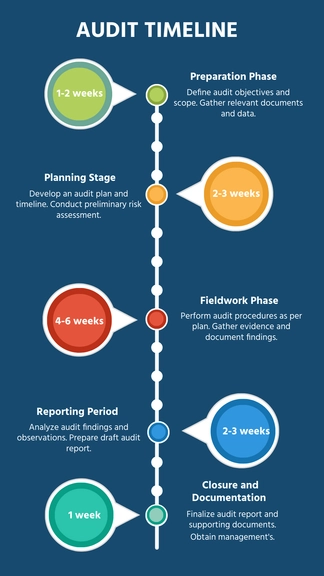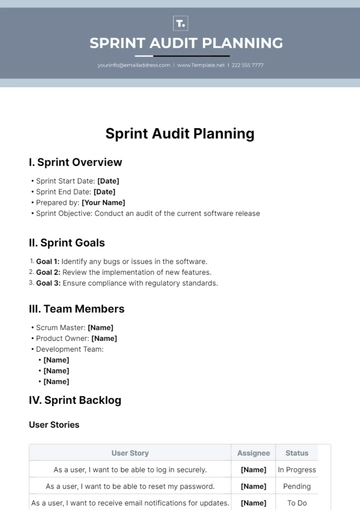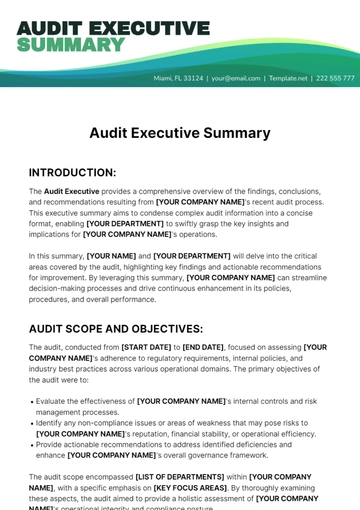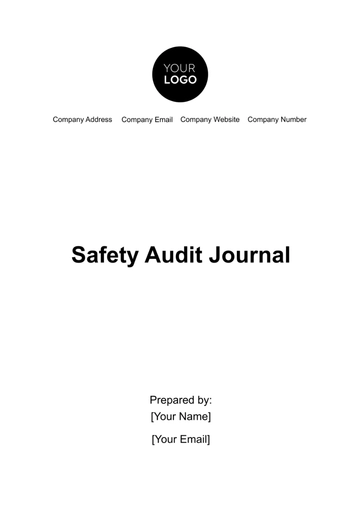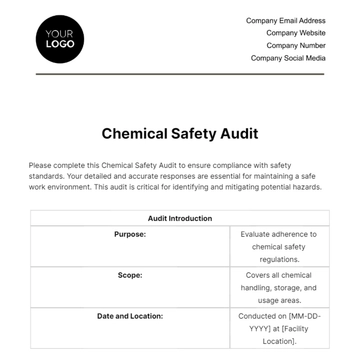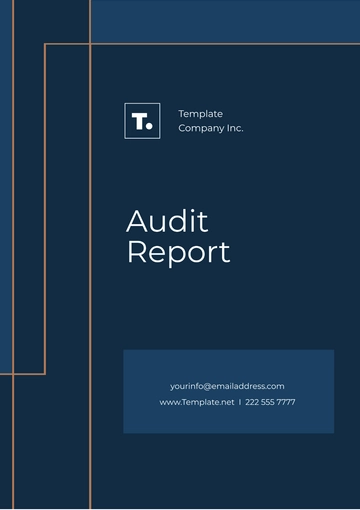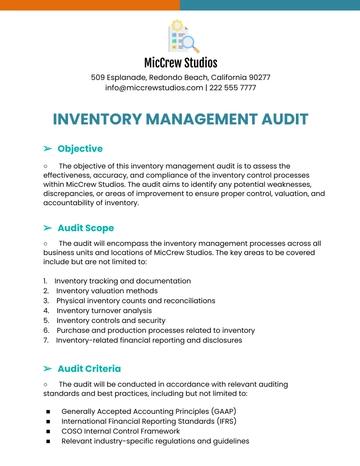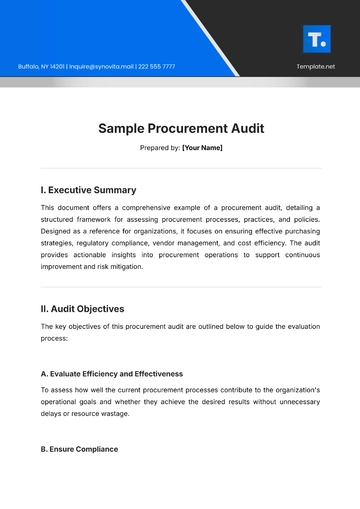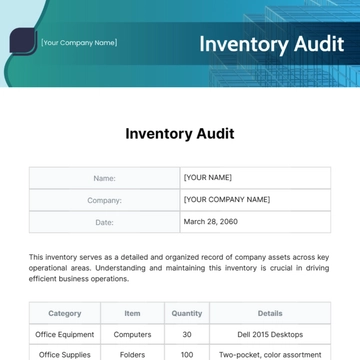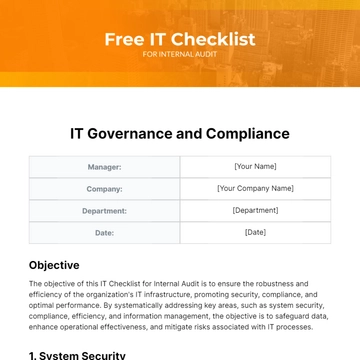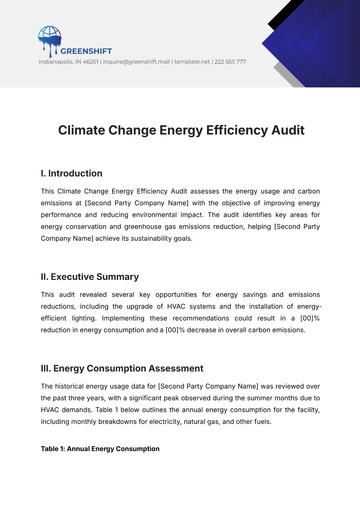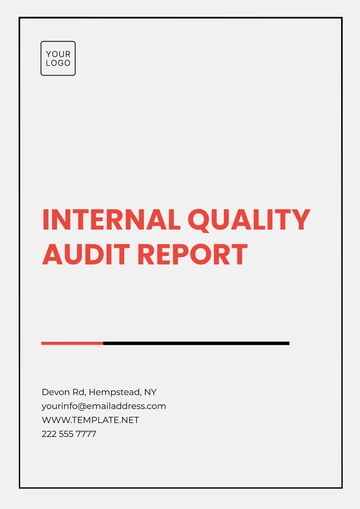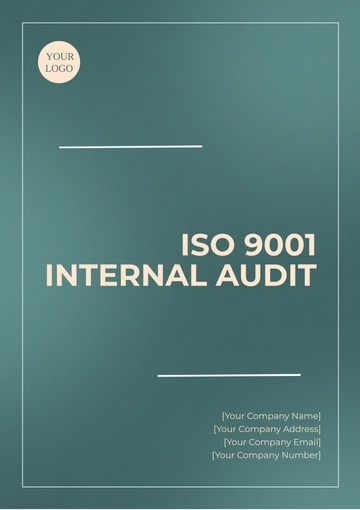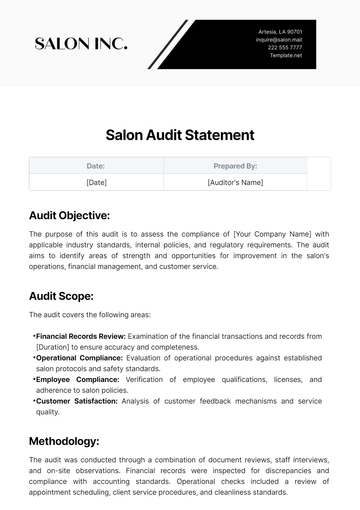Free Finance Audit Case Study
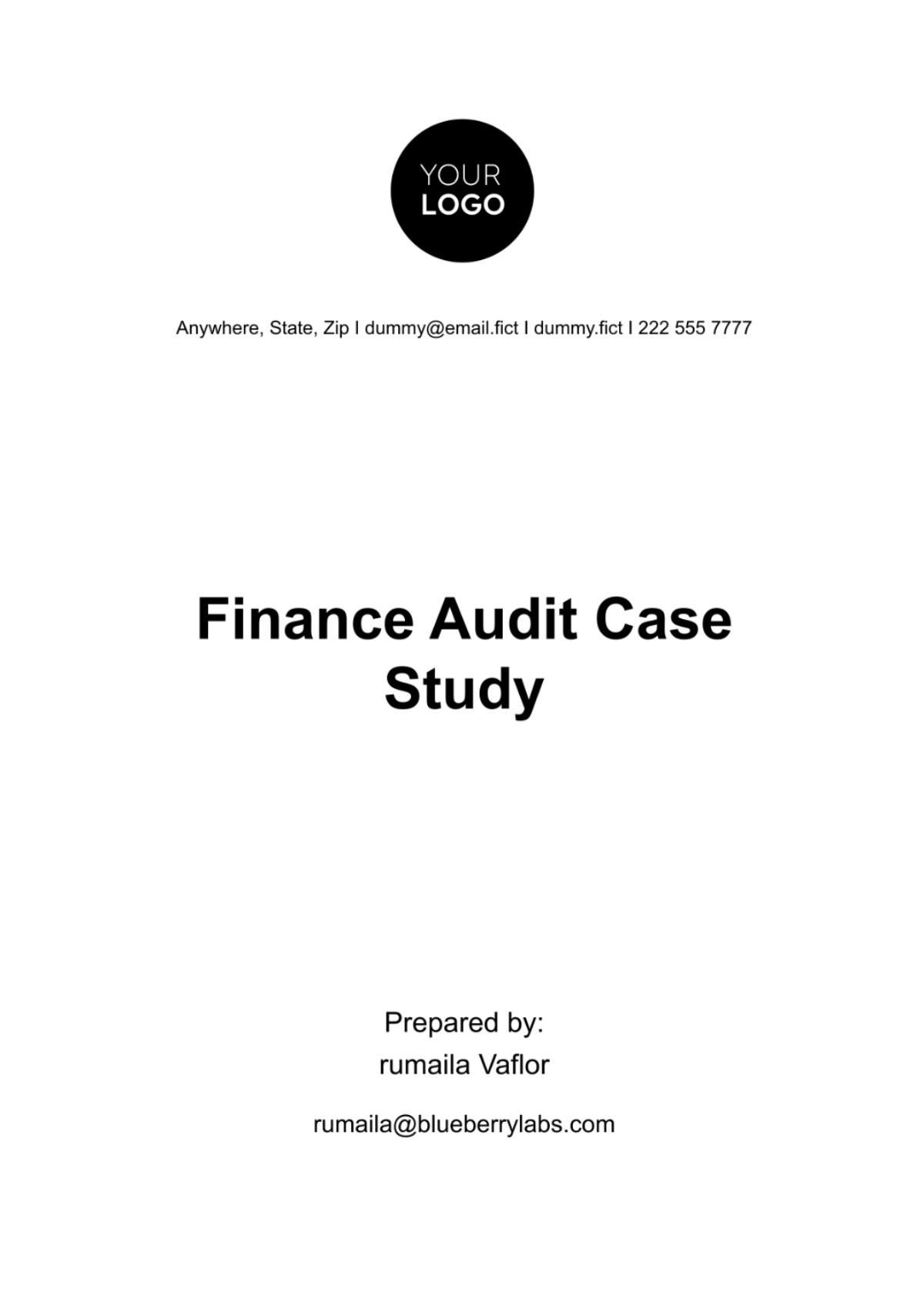
A. Executive Summary
This case study pertains to the comprehensive audit performed on [Your Company Name]'s financial statements for the fiscal year [2060-2061]. The primary objectives were to verify the financial information's accuracy, assess compliance with laws and regulations, and evaluate internal controls effectiveness. The audit's most significant findings included certain anomalies in revenue recognition and inadequacies in certain sectors of internal control. Major recommendations comprised corrective actions to enhance financial accuracy and bolster internal regulation standards.
B. Background Information
[Your Company Name], established in [2050], has rapidly emerged as a leader in the technology sector. Renowned for its innovative solutions and dynamic market presence, the company has become a benchmark in the tech industry. With a diverse range of products and services, [Your Company Name] has expanded its operations globally, showcasing a robust business model and a commitment to technological advancement.
The initiation of this audit was primarily triggered by concerns raised by stakeholders about the transparency of the company's financial reporting. These concerns were brought to the forefront during the annual shareholders' meeting, where questions were raised about the accuracy and clarity of financial disclosures. In response, the company's board of directors unanimously agreed to conduct a thorough financial audit to address these concerns and reinforce stakeholder confidence.
This audit aims to meticulously examine [Your Company Name]'s financial practices, ensuring they align with both US accounting standards and federal regulations. The review will focus on key areas such as revenue recognition, asset valuation, and expenditure reporting. By undertaking this audit, [Your Company Name] demonstrates its commitment to maintaining the highest standards of financial integrity and transparency, which are fundamental to sustaining its reputation and trust among investors, customers, and regulatory bodies.
C. Audit Objectives
The audit aimed to ensure the precision of financial statements, compliance level with requisite laws, regulations, and efficacy of internal control systems. Moreover, it also sought to address stakeholders’ concerns over financial reporting transparency.
D. Scope and Methodology
The audit encompasses the fiscal year 2060-2061, focusing on critical financial areas: revenue recognition, asset valuation, and expense reporting. It aims to verify compliance with Generally Accepted Accounting Principles (GAAP) in the United States and relevant federal regulations.
Methodology
Document Review: Examination of financial statements, tax returns, and related documentation for accuracy and completeness.
Data Analysis: Utilizing advanced analytical tools to identify trends, discrepancies, and anomalies in financial data.
Interviews and Surveys: Conducting discussions with key personnel to gain insights into financial processes and controls.
Compliance Testing: Assessing adherence to internal policies and external regulatory requirements.
Report Generation: Compiling findings into a comprehensive report with actionable insights and recommendations.
E. Risk Assessment
In conducting a thorough risk assessment, the audit team identified key areas of potential concern within [Your Company Name]. This process is essential to prioritize audit efforts and to ensure a focused approach to areas with higher risks. The assessment categorized risks into three primary types: financial, operational, and compliance. The following table summarizes these risks:
Risk Type | Identified Risks | Details |
|---|---|---|
Financial | Discrepancies in Revenue Recognition | Potential mismatches or inaccuracies in reported revenues, impacting financial statements' reliability. |
Operational | Insufficiency of Internal Controls | Weaknesses in internal processes, potentially leading to inefficiencies or errors in financial reporting. |
Compliance | Non-Adherence to Regulations | Risks related to non-compliance with GAAP and federal regulations, which could result in legal and financial repercussions. |
Miscellaneous | Unforeseen External Factors | External factors like market volatility or economic shifts impacting the company's financial stability. |
F. Findings and Analysis
The audit revealed significant discrepancies in revenue recognition practices at [Your Company Name]. A closer examination indicated that these discrepancies stemmed largely from a misinterpretation of the revenue recognition standard. This misunderstanding led to the overstatement of revenues in several financial periods, thereby skewing the financial statements and potentially misleading stakeholders about the company's actual financial performance. The issue highlights a need for enhanced training and clarity in applying accounting standards.
Additionally, the audit identified weaknesses in the internal control framework, particularly in inventory management and accounts payable. These deficiencies were characterized by inadequate checks and balances, leading to potential errors and inefficiencies in these sectors. The lack of stringent control measures could result in financial inaccuracies and affect the company's ability to manage its resources effectively.
Recommendations
The audit identified specific areas requiring corrective action and improvement. Based on these findings, a set of targeted recommendations was developed to address the issues in revenue recognition and internal controls. The following table outlines these recommendations with their respective objectives and action plans:
Area of Improvement | Objective | Action Plan |
|---|---|---|
Revenue Recognition Training | Rectify misinterpretations in revenue recognition | Implement comprehensive training for the finance team on accurate application of revenue recognition standards, with regular updates and workshops. |
Strengthening Internal Controls | Address weaknesses in inventory management and accounts payable | Develop robust, automated controls with advanced software solutions; conduct periodic internal audits; provide regular training and awareness sessions for staff. |
Implementation Strategies
To ensure the effective implementation of the recommended changes, a structured approach with clear timelines and strategies is essential. The following table outlines the implementation strategies for the key areas identified in the audit, providing a roadmap for [Your Company Name] to enhance its financial management practices.
Improvement Area | Implementation Timeline | Strategy Details |
|---|---|---|
Revenue Recognition Process Revision | Immediate with ongoing monitoring | Update and communicate new protocols. Schedule continuous monitoring and periodic reviews for effectiveness. |
Enhancement of Internal Controls | Six months for full implementation | Implement new systems focusing on inventory and accounts payable. First month for planning, followed by five months for rollout, training, and adjustment. Regular progress assessments to be conducted. |
Conclusion
The comprehensive audit of [Your Company Name] has underscored the critical nature of precise financial reporting and the necessity of strong internal controls within any leading organization. By meticulously addressing the identified discrepancies and implementing the recommended improvements, [Your Company Name] is set to substantially enhance its financial integrity and operational efficiency. The successful execution of these measures will not only improve the company's financial health but also significantly bolster the confidence of stakeholders in the company's financial transparency and accountability. This audit process marks a pivotal step in reinforcing [Your Company Name]'s commitment to best financial practices and trustworthiness in the eyes of its investors, partners, and customers.
- 100% Customizable, free editor
- Access 1 Million+ Templates, photo’s & graphics
- Download or share as a template
- Click and replace photos, graphics, text, backgrounds
- Resize, crop, AI write & more
- Access advanced editor
Maximize your financial reporting with Template.net's Finance Audit Case Study Template. This exceptional resource is both editable and customizable, offering unparalleled ease in tailoring your audit reports. Perfectly editable in our Ai Editor Tool, it's the ideal solution for professional and accurate financial documentation.
